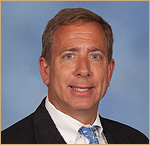Economics is about decision making and perhaps in a broad sense it appears that decisions today are being made differently than before the pandemic. Generally speaking, perhaps few fully understand how much has changed for employment, inflation, consumer behavior and more.
This level of anxiety is present in almost every aspect of society. If one is anxious about the future and has been taught in school that capitalism has serious flaws, one might become concerned about the future, seeing wealth and income disparity. Against this backdrop it becomes easier to advocate for a more socialist society where government takes more responsibility than free markets.
This of course will produce tensions in the political realm.
A WSJ poll found that only 25% believe they have a good chance of improving one’s living standard. More disturbing, nearly 70% believe the American dream—the idea that if you work hard, you will get ahead—is dead.
The Wall Steet Journal notes the big gap began after COVID and after the largest fiscal and monetary stimulus in history. Something changed, at the minimum in the psychology of the county, which I believe in brought on by decades of improper monetary and fiscal policy that went on steroids in 2020 which created a great wealth and income divide.
The Wall Street Journal states, as recently as 2000 more than 75% agreed they had a good chance of getting ahead. Now only 25% do and that is down from last year’s level,
It is thought if one does not believe a job will help you get ahead, and especially if you have access to income from either government or family, the motivation to seek a job will diminish.
Various government benefits allow people to retire even at what might be thought of as prime working years. It may not be coincidental that the percentage of people participating in the labor force has fallen considerably since 2000 with the most concerning drop in the cohort of workers aged 25 to 54.
The economy has been through many cycles since 1948 when unemployment had spiked considerably in quick order. In the last 2 ½ years the unemployment rate has increased less than percentage point from 3.4% to 4.3%, a level that was formerly viewed as “full employment.”
Why are so many downtrodden given current employment levels? Some might point to tariffs. The tariffs have created huge uncertainty but to date have not caused a spike in inflation or layoffs. The labor market is still robust where companies loathe either to fire or hire a workers.
Others say the rising cost of living (food, housing, insurance, etc.) have added to the recent sense of economic helplessness.
The Fed’s “dot plot” expects the unemployment rate will rise to 4.5% by year end and then slowly decline to decline to 4.2% by 2028.
Forecast for economic growth was upgraded and barring the tariff induced aberration growth has been above trend.
Economic growth was anemic when the Fed took rates to the zero bound in the 2010s after the 2008-09 financial crisis. Writing it differently much to the surprise of the FOMC, negative interest rates did not drive GDP higher.
During this period a massive amount of additional regulation was added that greatly impacted risk taking, the hall mark of a capitalist society.
Today, the Fed and the market are acting that lower rates will change consumer behavior. But will it?
The introductory sentence reads Economics is about decision making and perhaps in a broad sense it appears that decisions today are being made differently than before the pandemic.
Self esteem is earned. It is not given. All feel great after accomplishing a difficult task, remembering one’s hardest coach, teacher or boss…think Vince Lombardy, Don Shula or Chuck Knoll.
Social media has radically changed society as there is unending gloom and despair in an attempt to keep readers on various sites. Bad news sells (Facebook did some groundbreaking research on this topic). Confirmation bias is readily found and amplified.
The country is heading into the fiscal abyss if spending is not curtailed. As written many times it is a spending issue not a revenue issue. However, it is political suicide to attempt to curtail spending pointing to the unending diatribe about clawing back $9 billion in spending, which is equivalent to the quarter in one’s pocket.
If increased government spending was the elixir to happiness, 75% of society would still believe the American dream is still alive.
Leadership is defined as bringing disparate groups together as one, convincing all that it will be for the collective better good.
The Federal Reserve is in a difficult spot where perhaps yesterday’s benchmarks are no longer valid, amplified by a flawed collection process.
I believe we will overcome current problems, but the process may be volatile. The most neglected sense is common sense and unfortunately many believe common sense is lacking.
Commenting briefly on yesterday’s market action, equities led by a 4% gain in NVDA advanced nominally. Longer dated Treasuries increased several basis points in yields while shorter dated declined leading to a steepening in the curve.
Last night the foreign markets were up. London was up 0.03%, Paris up 0.72% and Frankfurt up 0.24%. China was down 0.18%, Japan up 0.99% and Hang Seng down 0.70%.
Futures are flat. The 10-year is up 1/32 to yield 4.14%.




